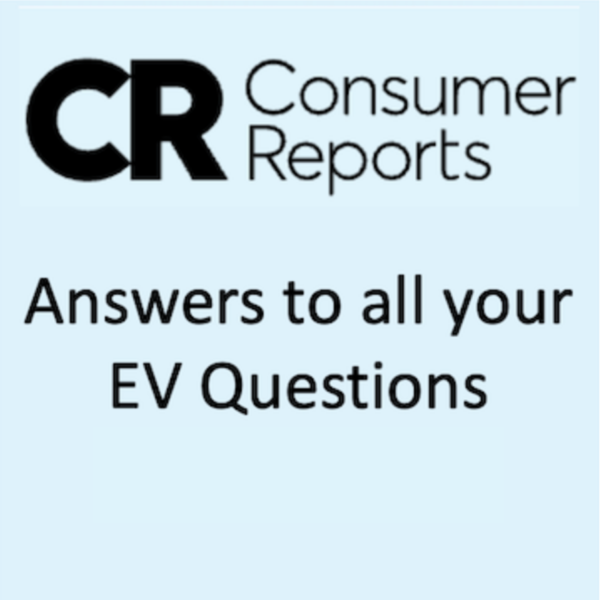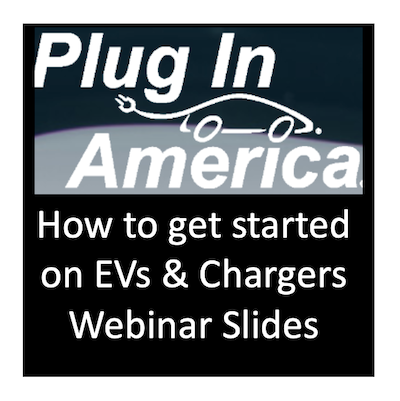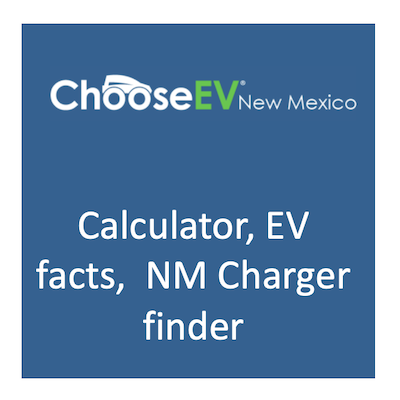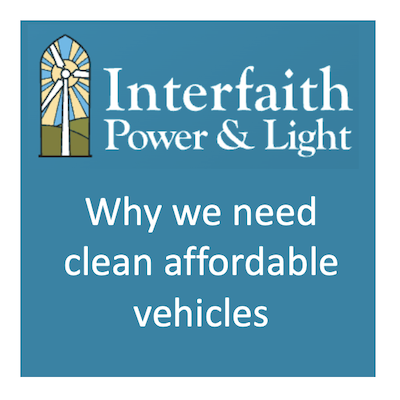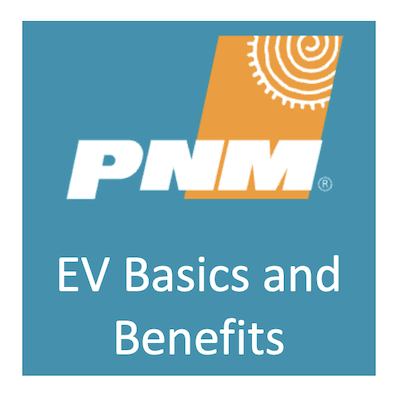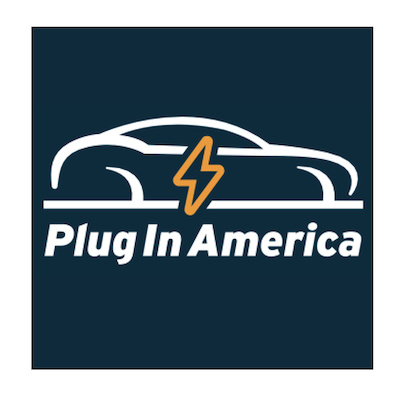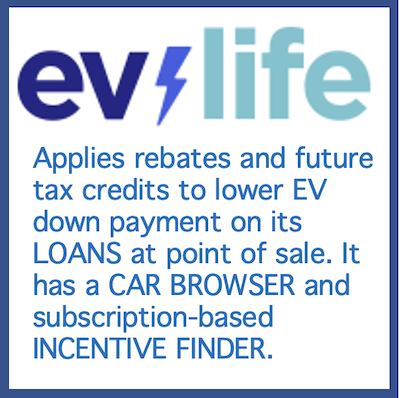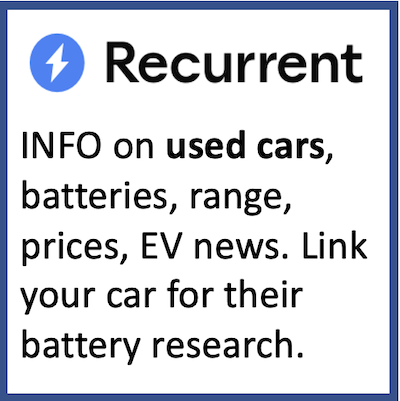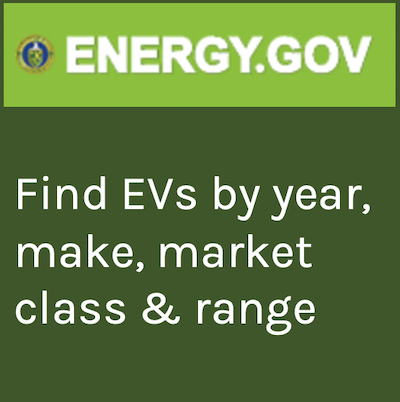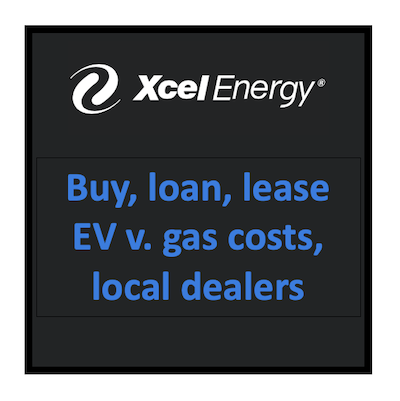Why Electric Vehicles?
 Electric vehicles (EVs) produce lower lifetime emissions (even if the electricity is generated by fossil fuels) and have 60% of the maintenance costs, lower fuel costs ($1.35 per gallon-equivalent) and lower lifetime costs* compared to gas-powered vehicles.
Electric vehicles (EVs) produce lower lifetime emissions (even if the electricity is generated by fossil fuels) and have 60% of the maintenance costs, lower fuel costs ($1.35 per gallon-equivalent) and lower lifetime costs* compared to gas-powered vehicles.
EVs have fewer moving parts and don’t require oil changes.
EVs can easily accommodate the range requirements of most Americans (who on average travel less than 50 miles daily) and for homeowners at least, convenient overnight charging fills the “tank” by morning.
EVs will be even less expensive to drive as utilities roll out “time-of-use” rates and demand-response programs. For example, PNM’s 10 pm-5 am rates will “fill the tank” for about $3.
 As battery range and charging networks expand and as prices come down, EVs will become more attractive to rural New Mexicans as well.
As battery range and charging networks expand and as prices come down, EVs will become more attractive to rural New Mexicans as well.
Technological innovation and entrepreneurial spirit are driving advances in cleaner battery materials, recycling and repurposing batteries for other uses after their 15-20 year-life span in vehicles. *July 2023 Cost of Ownership Report
What is best for you? An all electric vehicle (EV)? Or a hybrid electric vehicle (HEV: gas engine + electric motor charged by gas engine and braking) or a plug-in hybrid (PHEV: an HEV that can also be charged by plugging into electricity)? Check out this Wildgrid article to see what fits you best.
The largest source of CO2 emissions in the U.S. is transportation. Ideally, we’d all walk and bike more, or at least rely on public transportation. But given the long distances many New Mexicans travel this is not always practical. By driving electric we not only cut down on CO2, but we reduce the pollution that threatens the health of 45 million Americans who live close to busy roads and transportation hubs. Widespread transition to zero emission vehicles powered by clean electricity could save New Mexicans $3 billion in health care costs, 273 premature deaths, 7,380 asthma attacks and 32,300 lost workdays by 2050.
Electric Vehicles 101
Driving an EV feels different. It is quieter.  The acceleration from 0 to 60 is mind-blowing. Regenerative braking, which charges your battery, slows the car faster than coasting a gas-powered car.
The acceleration from 0 to 60 is mind-blowing. Regenerative braking, which charges your battery, slows the car faster than coasting a gas-powered car.
An EV requires a change of mindset about fueling up – remembering to plug it in at night if you have a charger at home or having to stop more often on a road trip.
On road trips, you don’t usually run your battery down close to zero. A good software system or app plans your stops so that you are charging anywhere from 20-80% of your battery’s capacity. Sometimes, at a fast charging station, the car is done before you’ve run to the bathroom and bought a snack.
Still have questions? These may help.
EV technology, policy and incentives are changing fast. A very helpful organization for information about financial incentives, EVs and chargers is PlugIn America. Here are some other resources to stay in the loop.
Shopping for new and used EVs
Selected buying guides, car databases for sellers and buyers, and resources on loans, FAQs, trends and news.
Incentives for New and Used EVs
 Tax Credits
Tax Credits
Combine Federal and State tax credits (and other rebates) for EV savings. But note there are taxpayer income limits, MSRP caps and restrictions on EV eligibility, as shown in the tables below.
NM state Clean Car Tax Credits – Available now for vehicles purchased May 15, 2024 onward. Unlike federal tax credit, the vehicle price limit is for the base model even if you get upgrades.
- USED EVs: In 2024, Federal and New Mexico state tax credits can be combined to reduce the price of a used EV costing less than $25,000 by up to $6,500. Search for eligible used EVs.
- NEW EVs: Only three new EVs qualify for both the Federal and New Mexico state tax credits as of Feb. 2024, and they are very hard to find: Tesla Model 3 Performance, Chevy Bolt and Chevy Bolt EUV. Chevy stopped making the Bolt in 2023; only some specific Bolts qualify. The combined tax credit is up to $10,500. More new EVs under $80,000 are eligible for the federal tax credit alone. Manufacturers who have not qualified for the Federal tax credit may have lowered their prices to compete. Search for new EVs eligible for the federal tax credit.
- LEASING: If the EV you want does not qualify for tax credits, consider leasing. There are far fewer restrictions on leasing and on used cars. You may be able to transfer your tax credit (up to $7,500; no income limitations) to the leasing company to get a lower rate.
- TRANSFERRING YOUR CREDIT FOR MAXIMUM SAVINGS: Starting in 2024, you may transfer your tax credits at the time of sale to dealers who have registered with the IRS Energy Credits Online system and New Mexico. In exchange for your credit you will receive an immediate discount or a downpayment.
- You are eligible for the maximum allowed federal tax credit, even if you do not pay taxes, but only if you transfer your credit to the dealer when you purchase the EV. Check with the dealer first to see that they accept transfers. As of March 1, 2024 Carvana and Carmax do not, but Magpie Motors, Fiesta Motor Group, Tesla and Sandia BMW/Mini (leases only) do. You have the option of filing for the credit at tax time instead, but if you do, you may not receive the full federal credit. An example: A $24,000 used car has a maximum federal credit of $4,000 (30% of $24,000 is $7,200, but the maximum credit is $4,000). If you transfer your credit to the dealer, you will get a $4,000 discount. If you do not transfer your credit and wait to claim it at tax time you will only get the $4,000 if you owe that much in taxes. If you only owe $1,000 you will only get $1,000. If you owe no federal taxes, you will get $0 for the credit.
- Participating dealers will be able to tell you right away if the car qualifies after submitting information online to IRS. Make sure you get a confirmation of the IRS Seller report before you leave the dealership.
- You are responsible for determining if you meet the income eligibility limits. If you do not, you will have to pay the IRS back.
- You still have to file a tax return later with Form 8936, the Vehicle Identification Number and the successful IRS Seller report.
- The tax credits apply to manufacturers who sell direct to consumers, like Tesla, Rivian and Lucid. This buying process may take place on line.
- MORE INFORMATION: Plug In America Federal Tax Credit Checklist for EV Shoppers.
- Good sources to check for updates include: Fueleconomy.gov, PluginAmerica, and the Internal Revenue Service.
- We are not tax experts, so do not rely on this website for tax advice!


EV Chargers 101
Slow Level 1 (120 Volts) is not a separate charger at all. You use the charge cord that came with your EV and plug into a standard AC 120 volt outlet at home. It is inexpensive, but slow, adding about 5 miles of range per hour to your battery. To avoid tripping a circuit breaker you might not be able to plug it in at the same time you use a washing machine or other major appliance.
Faster Level 2 (240 Volts) charging stations (at home or at public charging) allow you to charge your vehicle overnight at home, usually at a much lower cost than using a commercial network (especially if your electricity provider has special time-of-use rates for charging during off peak hours). It is 5-7 times faster than Level 1 charging. But Level 2 AC chargers require 240V, which you may not have in your garage or carport. If not, this may require an electric panel and/or wiring upgrade. There are Inflation Reduction Act, state and electricity provider tax credits and rebates to help with that. (see incentives below). It may also be possible for the EV charger to share the circuit with a circuit splitter. Chargers can be hard-wired in or plugged into an outlet.
The fastest chargers use Direct Current (DC). These are found along roadways, like the Tesla Supercharging network. Charging speeds and technology are expanding as more cars can charge at higher voltages – the Lucid Air Pure can add 312 miles in 15 minutes, for example. But not all cars are compatible with the high electric loads (Tesla V3 250kW Superchargers can have 480 volts/300 amps) of DC charging, and not all fast chargers deliver the power needed to ensure a fast charge. If you are buying an older car make sure you understand its charging capability and constraints. For new cars however, Ford, GM, Mercedes-Benz, Polestar, Honda, Kia, Jaguar, Hyundai, Genesis, and Rivian, Volvo and others announced that their vehicles will be able to use 12,000 of Tesla’s reliable Superchargers starting in 2024 via adaptors. After that these companies will build their EVs with Tesla connectors standard.
New Mexico’s map of proposed fast charging sites.
 Be aware that charging connectors differ by vehicle model and region in the world. Connectors had been converging towards two types in the U.S., the Combined Charging System Combo and the Tesla connector. A Magic Dock adaptor allows EVs with a CCS plus to charge at a limited number of Tesla Superchargers. But a growing number of companies are adopting Tesla’s connector as standard. Originally developed in Japan, the CHAdeMO is a DC fast charging connector, which may charge some models in the US like 2011-2021 Nissan Leafs and Mitsubishi iMiEV.
Be aware that charging connectors differ by vehicle model and region in the world. Connectors had been converging towards two types in the U.S., the Combined Charging System Combo and the Tesla connector. A Magic Dock adaptor allows EVs with a CCS plus to charge at a limited number of Tesla Superchargers. But a growing number of companies are adopting Tesla’s connector as standard. Originally developed in Japan, the CHAdeMO is a DC fast charging connector, which may charge some models in the US like 2011-2021 Nissan Leafs and Mitsubishi iMiEV.
EV Chargers – Financial Incentives

- Note that federal low- income upgrade rebates will not be available until Q3 of 2024 or later. These provide up to $4,000 for electric panel upgrades and $2,500 for wiring. A federal 30% tax credit up to $600 for electrical panel upgrades and a $1,000 tax credit for EV Chargers installed in rural or low-income communities are available now.
- Xcel Energy’s Home Wiring Estimator tool estimates wiring costs and shows how much an EV will save in fuel costs.
There are growing incentives for multi-family housing and commercial charging in addition to residential rebates and tax credits. Because it is always less expensive to build EV ready structures than retrofit them, EV Infrastructure Building Codes have been adopted in New Mexico and could be expanded. Expansion of time-of-use electric rates, which provide less expensive charging during off hours and rates for low-income households will allow more people to participate in clean transportation.
Charge Point’s EV Charger Incentives for Businesses.
EV Metrics and Terminology
Battery size or capacity is measured in kilowatt-hours (kWh). This tells you how much energy the battery holds. The bigger, the better. A commuter car like a Nissan Leaf might have a relatively small battery on the order of 40 kWh, while upper end cars have batteries around 100 kWh.
Range is the distance an EV can go on one charge. The larger the battery, the higher the range, generally. However many factors affect range including the weather, topography and how fast you drive. Regenerative braking adds charge back to your battery when you brake or coast. In general, most charging stops on long trips are mapped out for when you still have a decent amount of charge in your battery, so you are not recharging the whole battery every time. These can be timed with lunch and pit stops.
Efficiency or Mileage in Miles per Gallon equivalent (MPGe). This is calculated assuming that the energy content in 1 gallon of gasoline is equivalent on average to 33.7 kilowatt-hours of electricity. A car that uses 33.7 kWhr to drive 100 miles is rated at 100 MPGe. Electric cars are extremely efficient, having miles per gallons equivalents of over 100, compared to gas-powered cars, which averaged 25 mpg in 2020. Newer gas cars are rated just shy of 40 mpg.
Battery Electric Vehicle (BEV). A all electric car that is 100% battery-powered and needs a charger.
Hybrid Electric Vehicle (HEV). A car that has a gas engine as well as an electric motor and a small battery. It cannot be charged by plugging into an electrical supply.
Plug-In Hybrid Electric Vehicle (PHEV). A car that has a gas (or other fuel) engine, electric motor and a larger sized batter than an HEV. It can be charged by plugging into a charger.
Zero Emission Vehicle (ZEV). A vehicle that emits no harmful pollutants from its power source.
Low Emission Vehicle (LEV). California’s definition.
NEMA stands for the National Electrical Manufacturers Association. NEMA 14-50 is a charging plug for a 240 volt outlet carrying 50 amp. Read more here.




